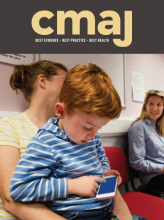Tetrahydrocannabinol acts on the endocannabinoid system, which is ubiquitous in reproductive tissues
Tetrahydrocannabinol, the active ingredient in marijuana, is a lipophilic compound with a prolonged half-life of 20–36 hours.1 Tetrahydrocannabinol activates the cannabinoid receptors, which are part of the endogenous endocannabinoid system. This system is found in the hypothalamus, pituitary and internal reproductive organs in both sexes.2,3
Marijuana use can decrease sperm count
Smoking marijuana more than once weekly in the preceding 3 months (n = 130/1215) was associated with a 29% reduction in total sperm count (95% confidence interval −46% to −1%).3 Sperm motility and morphology were unaffected.3
Marijuana use may delay or inhibit ovulation
In a study of 201 women, ovulation was delayed by an average of 1.7 to 3.5 days (p = 0.04), compared with controls in the 29 women who smoked marijuana at least once in the preceding 3 months.4 In that study, 43% of the confirmed anovulatory cycles occurred in marijuana smokers even though they represented only 15% of the study population (statistical analysis not performed).4
For most couples, smoking marijuana does not affect their ability to conceive, but for couples with subfertility or infertility, it could be a contributing factor
National cross-sectional survey data (United States) indicate that smoking marijuana, ranging from less than once per month to daily, in either partner does not significantly affect time to pregnancy.5 However, for couples with infertility, the changes in ovulatory function and sperm count associated with smoking marijuana could compound their difficulty with conceiving.
More and better-quality research on the fertility implications of recreational marijuana use is needed
The few human studies on marijuana and fertility are small, nonrandomized and mainly retrospective, introducing inherent confounders. Reliance on self-reported marijuana use introduces inaccuracy, especially where the drug is illegal, and omits valuable information on route and dose. The findings should be interpreted with caution.
Footnotes
CMAJ Podcasts: author interview at https://soundcloud.com/cmajpodcasts/181577-five
Competing interests: None declared.
This article has been peer reviewed.









Podcast